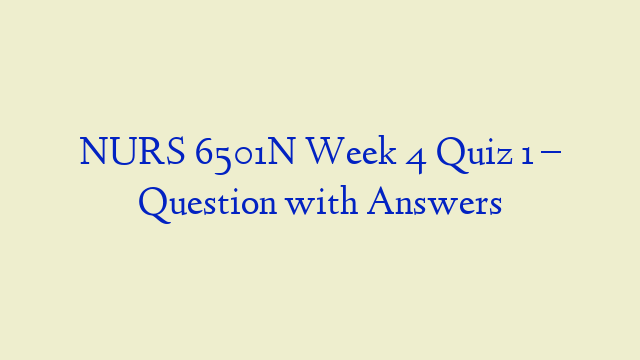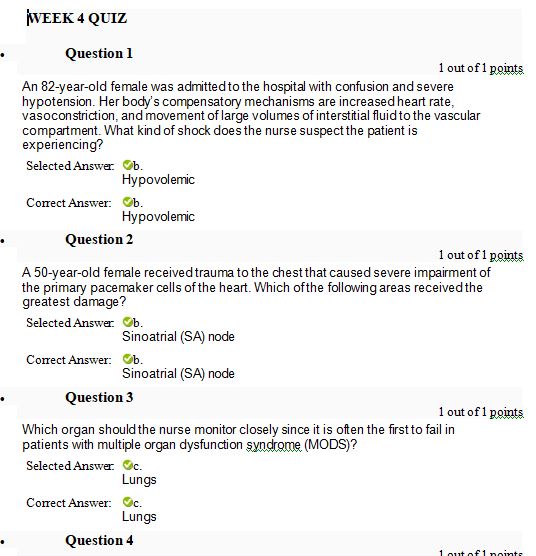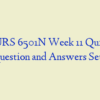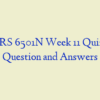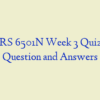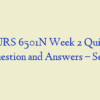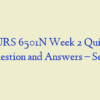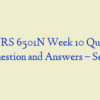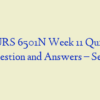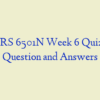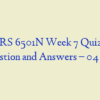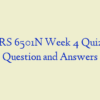Description
NURS 6501N Week 4 Quiz – Question with Answers
- An 82-year-old female was admitted to the hospital with confusion and severe hypotension. Her body’s compensatory mechanisms are increased heart rate, vasoconstriction, and movement of large volumes of interstitial fluid to the vascular compartment. What kind of shock does the nurse suspect the patient is experiencing?
- A 50-year-old female received trauma to the chest that caused severe impairment of the primary pacemaker cells of the heart. Which of the following areas received the greatest damage?
- Which organ should the nurse monitor closely since it is often the first to fail in patients with multiple organ dysfunction syndrome (MODS)?
- An 80-year-old female is in the hospital for a bone fracture. While there she develops a large, nonlethal pulmonary embolus. Which of the following is a direct result of the obstruction to pulmonary blood flow?
- A 54-year-old male is diagnose with left bundle branch block. Which of the following structures would not receive an electrical impulse?
- A 52-year-old female is …..with coronary artery disease. The nurse assesses for myocardial:
- When a patient has a massive pulmonary embolism (PE), what complications will the nurse monitor for?
- What term should the nurse document for a detached blood clot?
- A 65-year-old male is ….to the ER for chest pain. An electrocardiogram reveals a prolonged QRS interval. What is the nurse monitoring when the nurse observes the QRS complex on the electrocardiogram? The QRS complex reflects:
- A 50-year-old female presents with a low heart rate and low blood pressure. She is given an intravenous (IV) infusion of fluids. The increase in atrial distension results in:
- Many valvular stenosis and regurgitation disorders in adults have a common etiology. Which of the following conditions should alert the nurse that the patient may have both types of valve dysfunction?
- A 65-year-old female presents to the emergency department reporting difficulty swallowing and shortness of breath. A CT scan would most likely reveal an aneurysm in the:
- When a nurse checks the patient for orthostatic hypotension, what did the nurse have the patient do?
- Which of the following patients is at highest risk for developing pulmonary embolism (PE)?
- A 5-year-old female is found to have hypertension during three separate visits to her primary care provider. The nurse would expect tests to suggest that the hypertension is secondary to:
- A 75-year-old female has been critically ill with multiple organ dysfunction syndrome (MODS) for longer than a week and has developed a severe oxygen supply and demand imbalance. The statement that best describes this imbalance is which of the following?
- A 56-year-old male is ……with coronary artery disease. Which of the following modifiable risk factors would the nurse suggest the patient change?
- A 51-year-old male is at the health clinic for an annual physical exam. After walking from the car to the clinic, he developed substernal pain. He also reported discomfort in his left shoulder and his jaw, lasting 2 to 3 minutes and then subsiding with rest. He indicates that this has …..frequently over the past few months with similar exertion. The nurse suspects he is most likely experiencing nurs 6501n week 4 quiz
- A 35-year-old male presents with pulmonary hypertension. Testing reveals he is in right heart failure. Which of the following is the most likely diagnosis the nurse will see listed on the chart?
- Most cases of combined systolic and diastolic hypertension have no known cause and are ….on the chart as _____ hypertension.
- A 50-year-old male with a 30-year history of smoking was …..with bronchogenic cancer. He developed edema and venous distention in the upper extremities and face. Which of the following diagnosis will the nurse observe on the chart?
- A 28-year-old female presents with severe chest pain and shortness of breath. She is ….with pulmonary embolism, which most likely originated from the:
- A 50-year-old obese male with hypertension and coronary artery disease visits a nutritionist for food counseling. He has an elevated level of low-density lipoprotein (LDL) and a low level of high-density lipoprotein (HDL). Which of the following should the nurse advise him to avoid?
- A 32-year-old female presents with lower leg pain, with swelling and redness. While obtaining the patient’s history, which finding could have caused her condition?
- A 59-year-old female is ….with left ventricular failure. If a decrease in kidney perfusion occurs, the nurse knows this would ultimately cause:
- A 60-year-old male presents to his primary care provider reporting chest pain. He is diagnose with atherosclerosis. This disease is …….:
- A 50-year-old male visits the cardiologist for an EKG. Results indicate that he has no PR interval and a variable QRS rate with rhythm irregularity. Which of the following is the most likely diagnosis to be …..on the chart?
- A 52-year-old male is diagnose with primary hypertension. He has no other health problems. Present treatment would cause the nurse to anticipate administering which drug to the patient?
- Which condition should cause the nurse to assess for high-output failure in a patient? nurs 6501n week 4 quiz
- A 52-year-old male presents with pooling of blood in the veins of the lower extremities and edema. The diagnosis is chronic venous insufficiency, and an expected assessment finding of this disorder is:

